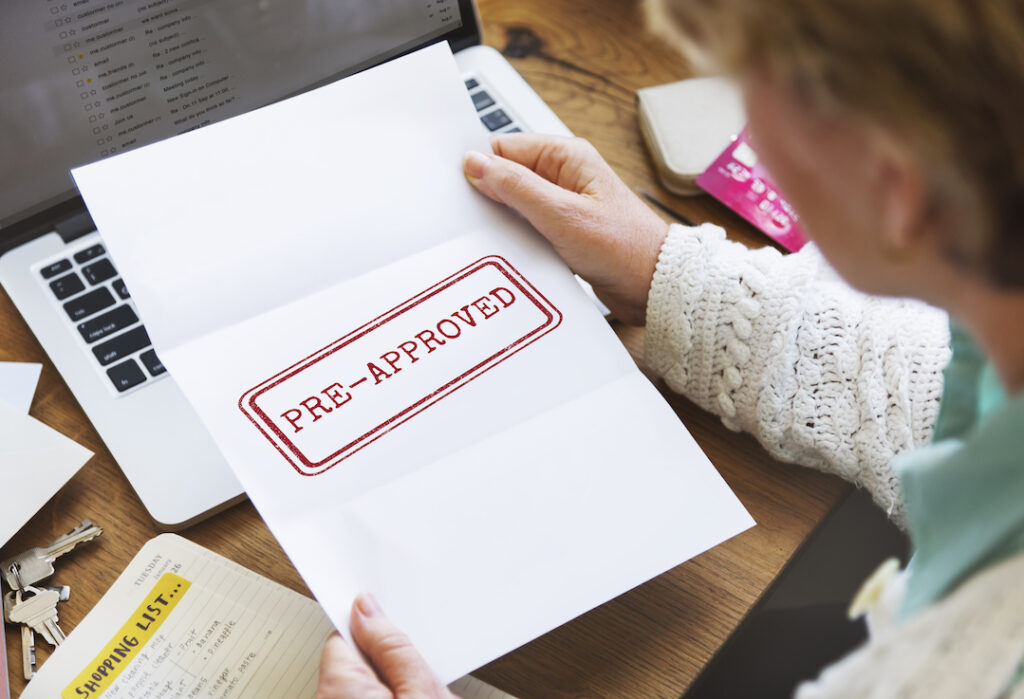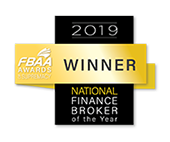Buying a home is a major financial decision, and it’s important to understand your borrowing power before you start shopping. This is especially important in today’s fluctuating real estate market and shifting interest rates.
Your borrowing power is the amount of money a lender will be willing to lend you based on your financial situation. The higher your borrowing power, the more expensive a property you can afford.
In this post, we will reveal 7 expert strategies to help you navigate the uncertain rate landscape, maximise your borrowing power and secure your dream home.
Table of Contents
1. Assess Your Financial Situation
The real estate market is constantly evolving, and buyers are facing challenges when navigating The Lending landscape. Shifting interest rates have decreased your borrowing capabilities. Since the rate started to rise, we have seen a 30-40% reduction in what you could borrow before the rate started to rise. This is why it is important to first assess your situation.
Try a mock mortgage to see what you can afford
Before you even talk to a bank or a mortgage broker, see what you can comfortably pay each week. The best way to do this is what we call a mock mortgage. This is where you look at what you are currently paying for rent—let’s say $500 a week— and what you are currently saving— say $100 a week— and add those up.
Then you look at how much you can comfortably take away from your living expenses to put towards your mortgage – say $50 a week—and add that as well. That means you can comfortably pay $650 per week for a mortgage. Now, you need to work backwards and say well, if $650 per week is the maximum I want to pay for my mortgage and everything else, then what kind of home does that leave me with?
This is really important because when assessing your financial position, you’re looking at it from your own point of view. It’s all well and good for the bank to say hey, we’re going to give you $1 million, but if you can’t afford $1,000 a week or whatever that million-dollar mortgage repayment is, and you’re only comfortable at 600 a week that’s where you really need to reassess and evaluate if buying a million-dollar home is going to be the most beneficial move for yourself.

Read more: Barefoot Investor bank accounts explained.
2. Use Online Calculators
The big challenge we’ve had with borrowers and people we’ve helped over the last 2 to 4 years is the change in borrowing capacity, as we mentioned earlier 30-40% cut. We were talking with people that are earning around $100,000 a year being able to borrow $600,000 or $700,000 in the previous year, but now their borrowing power has reduced to $500,000 or even $450,000. Unfortunately, a lot of calculators online haven’t updated with these changes. So be careful when using them.
We suggest you check out our calculator for more up-to-date information on how much you can borrow. We also have a free course you can check out that will help you through the exact things we’re covering in this post.
How do online calculators work?
It’s important to understand that when the bank assesses your finance application, they’re actually looking at your ability to repay the mortgage based on today’s current rate plus a 3% buffer. So if the current rate is 6%, they’re looking at your ability to pay a 9% rate, and that’s why we’ve seen such a cut on borrowing ability because when rates were at 2%, the bank’s assessments were only around 5%.
Why is my borrowing power less than I expected?
The banks have not only increased interest rates but the underlying costs that they use to calculate your monthly living expenses. That makes a huge difference in your affordability because the cost of living is going up. So, a few years ago, if you were a single person, the bank would put your living expenses around $1,000, but that has crept up to about $1500.
So not only is your borrowing capacity getting pinched from the interest rates, but the current cost of living (compared to covid) is also making a huge impact. Therefore make sure to use an up-to-date calculator.

Read more: Mortgage calculator.
3. Reduce Existing Debt or Credit Facilities
How can this help increase your borrowing power?
Case study: Sarah's credit card
Sarah wanted to buy a home, so we were going through pre-approval options and everything else. Like most people these days, she had an after pay, a credit card and a HECS debt. Interestingly, Sarah said she just keeps the credit card for points for when she wants to travel and for international currency. She actually doesn’t use it much.
But…
When we ran through the numbers, that card reduced her borrowing capacity by $70,000. Previously the reduction would only be about $40,000 or $50,000, but it’s slowly increased over the last few years with the interest rate changes. So we told her she could get an extra $70,000 in borrowing capacity if she reduced her credit card limit or cancelled it.
The good thing when we’re doing pre-approval and helping our clients is telling them you don’t need to do that immediately. If you want to go to the upper end of that pre-approval limit, then we’d need to close the credit card before you find a place and before settlement.
Paying off other loans can boost your borrowing power
The other thing that can help increase your borrowing power is paying off car loans, personal loans and even your HECS debt. Your student loan debt is indexed. So the Banks look at that debt as an index of your income. Let’s say you earn $100,000; the student debt will reduce your borrowing Power by $70,000. It does not matter if you owe $10 on your HECS or $100,000, the calculation is based on a percentage of your income which is what the government looks at, and that’s how the bank calculates your assessment. So if you have a small amount of HECS debt, paying that off completely to zero means that your borrowing power increases by $70,000.

4. Leverage Government Grants and Schemes
Leveraging home guarantees and schemes can help home buyers not only from a borrowing point of view but to also get ahead in the property game. The biggest change in the last few years has been the First home guarantee scheme, where the government acts as your guarantor, allowing you to put down a 5% deposit. You have to meet eligibility criteria, but this scheme is pretty amazing. Ordinarily, if you didn’t have this scheme and only had a 5% deposit, you would have to pay Lenders Mortgage Insurance, which can get into the thousands.
How does the Home Guarantee Scheme work?
With the Home Guarantee Scheme, the government’s saying if you go into default, the government will cover it. So the bank considers that a lower risk, and they will give you better rates and assess you as if you have a 20% deposit, meaning your borrowing capacity is higher. This is because when the banks assess you like we talked about earlier, they’re looking at adding a buffer on the current rate. So if you get a 6% rate under the home guarantee scheme compared to 7% if you weren’t under this scheme, you can see straight away you’re going to get 10% better in borrowing capability.
The other thing to remember is you also have first-home buyer grants. So if you’re buying a brand new property, depending on the state you’re in, there are lump sum payments, sometimes up to $15,000. This is where the government will give you a grant for buying a brand-new property.
You also have access to the First Home Super Saver Scheme. This scheme is for home buyers looking to buy their first home being able to save by making additional contributions in their superannuation with the ability to withdraw those contributions at a lower marginal tax rate.
Stamp Duty concessions and exemptions also apply if you are a first homeowner. This is determined on a state-by-state basis, but it also once again reduces the Stamp Duty costs, which will increase your borrowing power and get you in the market quicker.
How does the First Home Guarantee increase my borrowing power?
With the Home Guarantee Scheme, the government’s saying if you go into default, the government will cover it. So the bank considers that a lower risk, and they will give you better rates and assess you as if you have a 20% deposit, meaning your borrowing capacity is higher. This is because when the banks assess you like we talked about earlier, they’re looking at adding a buffer on the current rate. So if you get a 6% rate under the home guarantee scheme compared to 7% if you weren’t under this scheme, you can see straight away you’re going to get 10% better in borrowing capability.
Other grants you can use to increase your borrowing power
With the Home Guarantee Scheme, the government’s saying if you go into default, the government will cover it. So the bank considers that a lower risk, and they will give you better rates and assess you as if you have a 20% deposit, meaning your borrowing capacity is higher. This is because when the banks assess you like we talked about earlier, they’re looking at adding a buffer on the current rate. So if you get a 6% rate under the home guarantee scheme compared to 7% if you weren’t under this scheme, you can see straight away you’re going to get 10% better in borrowing capability.
The other thing to remember is you also have first-home buyer grants. So if you’re buying a brand new property, depending on the state you’re in, there are lump sum payments, sometimes up to $15,000. This is where the government will give you a grant for buying a brand-new property.
You also have access to the First Home Super Saver Scheme. This scheme is for home buyers looking to buy their first home being able to save by making additional contributions in their superannuation with the ability to withdraw those contributions at a lower marginal tax rate.
Stamp Duty concessions and exemptions also apply if you are a first homeowner. This is determined on a state-by-state basis, but it also once again reduces the Stamp Duty costs, which will increase your borrowing power and get you in the market quicker.

5. Get pre-approved
You may be wondering why pre-approval is important for your borrowing power. We will explain why in this section.
The market is constantly changing, and unfortunately, so has the lending landscape. During Covid, the cash rate was pretty flat, and nothing happened for a long time, which meant the bank’s assessment rates did not change. So if you applied at the beginning of Covid, before the rate started to change, your borrowing capacity would have been the same.
Fast forward to today, we’ve had 13 rate rises! As the interest rates and mortgage repayments have risen, borrowing capacities have decreased. Since interest rates are now rising regularly, a pre-approval is probably the only way to hedge against that—unless your pay is going up at the same pace.
How does a pre-approval help my borrowing capacity?
With a fully-assessed pre-approval, the bank will lock in the assessment rate. If the rate is 6%, they will assess you at 9% (6% + 3% buffer) and lock that in for the next 90 days. If the Reserve Bank decides to increase interest rates the following month by 1% and the rate goes up from 6% to 7%, the bank will keep your assessment rate at 9% instead of 10% because you have a pre-approval. Therefore you can be confident that if you were preapproved for $500,000, that borrowing capacity will remain the same even if interest rates rise within those 90 days.
Be careful: Not all banks do this
It’s important to note that not all banks do this. Some banks will want to reassess and change things around if interest rates rise. So that’s where you want to work with an experienced mortgage broker who understands the difference between a fully assessed pre-approval—where someone’s actually looked at your pay slips and living expenses — versus a pre-approval where they just do a credit check without looking at your payslips.
That said, some banks will give you a fully assessed pre-approval but will still want to reassess you if the rate goes up within those 90 days. So you may have been pre-approved for $600,000 and then confidently find your dream home for $600,000. But when you go to the bank, they may say the rates have gone up since we gave you a maximum pre-approval, but now you can’t afford it because we’re assessing you on a higher rate. So this is something to also keep in mind.
So work with a broker like ourselves where we can get your pre-approval in place and help you feel secure that you know you’ve got your ability to get your finances sorted.

6. Be Flexible
It’s important to be flexible with your purchase. For example, you may like the apartment complex you live in and decide to buy a unit there. The apartment may be worth $500,000, so you start saving for a deposit. After 2 or 3 years, you do your numbers and realise that you can’t afford that apartment because your borrowing capacity has decreased and the purchase price has increased to $700,000! It may be very discouraging, but if you are a little bit flexible, you can still get into the market with that $500,000.
How do I do that?
By understanding that your first home doesn’t need to be your forever home. You may no longer be able to afford the unit you wanted, but you can buy an apartment in the next suburb, which is also close to your work and is something you can afford. You can always upgrade later. There is no need to get depressed or stretch yourself to buy something you can’t afford.
Try the next suburb over
Say, for example, you’re looking for a 3 bedroom property in Ashgrove in Brisbane and your budget’s $800 000 and below. But you’ve gone on realestate.com.au, and you look at the past sales, and all 3-bedroom properties are going for over a million dollars. You can then decide to be flexible and look at the next suburb over, which is Mitchelton. Here you have more opportunities to be successful because the previous sales show that the houses are within the $800,000 range.
So it’s important to be very flexible with what you’re looking for. At Hunter Galloway, we can provide free unlimited customised property reports, and suburb reports to help you understand which suburb will be the most appropriate for you to be looking at buying.

Read more: 12 steps to research a home.
7. Get Professional Advice
The home-buying process is complicated. There are lots of people involved, and big amounts of money getting pushed around. Sometimes you can jump online, and there is inaccurate information, such as you need a credit file to buy a home, which is the American system and not the Australian system.
Although it can sometimes feel overwhelming, buying a home can be a rewarding process if you have the right home buying team on your side. You should look to work with skilled homebuying experts like conveyancers, buyers agents and mortgage brokers.
While getting advice online is good, ask yourself if the person speaking is a professional. If they are not a professional, their advice may end up costing you thousands of dollars in loss.
Read more: Putting together your homebuying team.
Bonus: Can The Type Of Property Affect My Borrowing Capacity?
Not only can your borrowing capacity change due to your income and the amount of deposit you have, but the type of property can also impact it. So, if you’re looking at buying a townhouse or an apartment, the strata and body corporate fees can actually reduce how much the banks are going to lend you. The big reason is strata fees can be pretty variable.
Let’s say your current borrowing capacity is $984,000. You could buy a unit in a nice 2-story walk-up where there is no lift or gym that needs to be maintained. So body corporate or Strata fees could be much cheaper than buying something in a 10- or 15-story building with two lifts, a gym, and lots of facilities that need to be maintained.
But if you were to pay $500 a month for strata fees, which is pretty standard—it’s about $1500 a quarter—your borrowing capacity would reduce from $984,000 to $920,000. That’s a $64,000 reduction in borrowing capacity simply because you are looking at buying a unit!
Next Steps And Getting Your Home Loan Approved.
Our team at Hunter Galloway is here to help you buy a home in Brisbane. Unlike other mortgage brokers who are just one-person operations, we have an entire team of experts dedicated to helping make your home loan journey as simple as possible.
If you want to get started, please give us a call on 1300 088 065 or book a free assessment online to see how we can help.







 Start again
Start again










